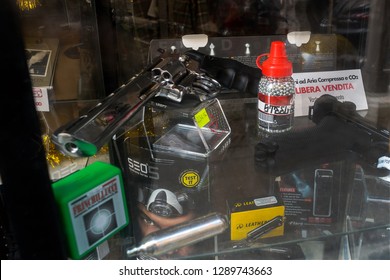
As is the case with most firearm-related issues, it’s always better to be safe than sorry. If you think you fired some ammunition that was bad, take some time to stick a rod down the barrel and clean the firearm. This could lead to debris in the barrel of your gun, which in turn can cause problems later on down the line. If a cartridge is old, it’s possible it may not fire out of your gun correctly. They can usually last in most moderate climates for 3-6 months, but it’s best not to risk anything longer than that. When a bullet is in a magazine, it’s more at risk of humidity and oxygen, both of which are damaging to a bullet. It’s recommended that you don’t store ammo in a magazine for more than six months. How long can you store ammo in a magazine? This leads to the primer and propellant charge of the ammunition being defused and deactivated, which renders a bullet useless. When ammunition goes bad, the metal on the lead starts to degrade. Still have some questions about your ammunition? Here are some frequently asked questions and our answers about the lifespan of ammunition: What happens when ammo goes bad? This is why it’s so important to invest in some tightly sealed containers if you want to keep your ammo usable for long periods of time. If the ammo is placed in unfavorable storage spaces, then the lead and primer will eventually degrade. Oxygen can be damaging to the metal found in cartridges, no matter how high of quality your ammunition is. It can also help to pack some sawdust into these containers to keep the ammo dry. You’ll want to store your ammo in ammo cans or sealed storage containers with an air conditioner in order to keep the moisture away. If you store your ammunition in a humid environment, there’s going to be more moisture in the air, which can damage your ammunition. Moisture is the worst enemy to your ammunition. If you store it somewhere cold, you risk condensation forming on the ammo when you bring it out into the hot outdoors. Because of this, you’ll want to store your ammunition in an air-conditioned climate, especially if you live somewhere warmer. In warmer temperatures, the effects of moisture and oxygen are more prevalent and the threat to your ammunition stock is greatly increased. If you implement these variables within your storage space, then you can get the most out of your ammunition no matter how long you hold onto it.

There are a few things you can do to extend the life of your ammo and guarantee that it will last for years (or decades) to come. Best Practices for Extending the Life of Your Ammo When you see discoloration or rust, you can be confident that the ammunition has lost its function and is unusable. A tell-tale sign of any propellant charge or primer deactivation is to find rust or discoloration on the primer or the rim of the ammunition case. If this does happen, the primer will be deactivated as well as the propellant charge, which makes the ammunition completely useless. It takes a good amount of moisture and humidity to do so, and it usually happens in the case of repeat exposure - but it is certainly possible. If ammunition gets noticeably wet or is exposed to enough humidity that moisture enters the primer, then it can be deactivated. How Ammunition CAN Go Bad (and what happens when it does)Īlthough time itself cannot end the life of ammunition, moisture and humidity can do it. If everything seems normal, you should be good to go. Listen to your gun, smell the smells and take a close look at the target. It’s highly recommended that if you find ammunition, you take it to a practice range and fire a few rounds to ensure safety and effectiveness before you take it out into the field. It can be slowed down, its flight path could be changed, or it could potentially cause errors in other ways. The less power that the gunpowder has, the less effective your bullet will be. As time goes on, the gunpowder in the ammunition tends to lose its power - it takes a long time for this to happen, but it happens nonetheless. However, that’s not to say that an old bullet is just as effective as a fresh bullet. If it’s stored correctly, then there’s no real known limit to how long you can keep ammunition.

Many manufacturers will list an expiration date of ten years past the manufacturer date, but that’s more for legal reasons than it is for safety reasons.

In terms of shelf life, ammunition generally doesn’t expire or go bad.
Shelf life ammo how to#
Not only do we have the answer to that question, but we also have answers to all your other questions related to ammunition longevity, including how it can go bad, how to extend the life of your ammo, and some other frequently asked questions. Have you been in this scenario before - you were rummaging through your attic or basement, and when rifling through your belongings, you found some old boxes of ammo? If so, you’ve probably asked yourself the question “does ammo go bad?”


 0 kommentar(er)
0 kommentar(er)
